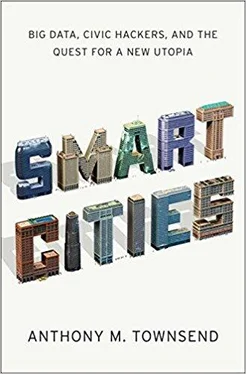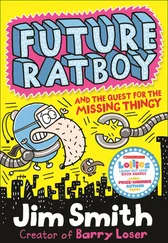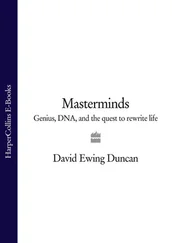Still, Hebbert is optimistic. He believes we are witnessing a rapid expansion of “tools that help neighborhoods be more prepared when formal planning starts.”44 This could create a virtuous circle, as citizen groups scrutinize open city datasets for warning signs. He speculates, for instance, that analyzing building demolition permits would offer a new holistic and real-time perspective on real estate maneuvers at the block level. The impacts of these private dealings on the community could be better addressed before the fact than afterward.
The days when machines plan our cities are way off. However rapidly they can simulate a new future, humans will remain the key decision makers, and choices about the future of cities will always be disputed. For Joroff, “Strategy will always require a political process to continuously shape what is wanted and what is to be achieved. Both strategy-making and operations require conscious decisions and actions. Neither should not be seen as merely algorithm-driven.”45 But cities that don’t find a way to leverage smart technology to make the planning process a more continuous kind of design will fall behind the pace of construction. As Ekumenopolis, a recent documentary film on Istanbul’s building boom reflects, “Everything changes so fast in this city of 15 million that it is impossible to even take a snap-shot for planning. Plans are outdated even as they are being made.”46 Yet, in this very city, the planners are catching up, and using real-time data to do it. In 2012 IBM helped them redesign the entire city’s bus routes based on billions of data points harvested from recent mobile phone movements. The goal—to lay out the bus routes to get people closer to where they were actually going.47
Crowdsource with Care
In Democracy in America , Alexis de Tocqueville marveled at Americans’ propensity to solve problems outside the bounds of government. “Americans of all ages, all conditions, and all dispositions constantly form associations,” he famously wrote, “to give entertainments, to found seminaries, to build inns, to construct churches, to diffuse books, to send missionaries to the antipodes; in this manner they found hospitals, prisons, and schools.... Wherever at the head of some new undertaking you see the government in France, or a man of rank in England, in the United States you will be sure to find an association.”48 Social technologies are but the latest upgrade to this urge that’s embedded in the DNA of American democracy.
Crowdsourcing is a way of tapping and directing the inherent sociability of cities. But as powerful as this approach can be, we need to be cautious. While seemingly progressive, crowdsourcing can also open the door for those who would cut the legs out from under government. Where crowdsourced efforts fill gaps left behind by shrinking budgets, the appearance of an inefficient and ineffective public sector will be difficult to avoid. In cities in the developing world, where crowdsourcing offers services governments have never adequately provided, they may allow for a permanent offloading of obligations. Poor communities may not have the luxury of this level of engagement—the day-to-day realities of survival often leave few resources for volunteerism. Taken to its extreme, crowdsourcing is tantamount to the privatization of public services—the rich will provide for themselves and deny services to those outside their enclaves. Unless we are ready to embrace anarchy and institutionalize unequal access to public services, there will be limits to what crowdsourcing can accomplish.
Crowdsourcing with care means limiting its use to areas where government needs to mobilize citizens around efforts where it lacks capacity, and there is broad consensus over desired outcomes. In a sense, it is the architecture of total civic participation in urban regeneration that Patrick Geddes could only dream of. But as much as crowdsourcing can augment capacity, government needs to ensure that critical public services are delivered to everyone and on time. What happens when helping one part of a crowd hurts another, for instance in traffic avoidance? Do you reward one set of users by revealing secret but limited-capacity, clog-free routes around jams? Or do you redirect everyone and cause entirely new jams? And crowds in and of themselves aren’t always a resource—they can be a nuisance too. In 1932, the Regional Plan Association of New York published a pamphlet promoting the need for good city planning. “Some Crowds Are Good,” a headline for one section proclaims, illustrated by a parade. But on the next page the image of an overcrowded subway reminds us that “Some Crowds Are Bad.”49 It’s a warning we shouldn’t forget.
Connect Everyone
Even the most sophisticated crowdsourcing strategy will be undermined if it doesn’t engage the right people. But even some of the simplest kinds of smart systems fail to connect everyone.
The consequences of disconnection go beyond just a lack of access. Connection is the means by which people will participate in civic life, not just actively but passively as well. In chapter 6, we saw the inequities in 311 use by non-English speakers in New York and Vancouver, and it’s likely this pattern is universal. What’s more troubling, however, is that cities increasingly view the data collected by 311 systems as a kind of urban dashboard and early warning system.50 Aside from inequality of service based on responses to specific complaints, cities may over the long term reallocate resources to trouble hot spots identified by patterns in 311 calls. Given that the most at-risk communities seem to use 311 less, this could produce deep inequities in how public services are provisioned. That 311, arguably the most ubiquitous and simple smart system, brings with it such insidious side effects is a disturbing warning sign. More sophisticated systems of smart governance may have unintended consequences that are even harder to see.
The broader challenge to inclusion in smart cities, however, is that by design everyone is left out. Nothing works until they connect, register, and log in—and any Web start-up trying to build a user base will tell you this is a tricky process to streamline. It’s an odd twist for determining eligibility for public services, almost like showing your driver’s license to enter a park or queue up at a soup kitchen. Schemes like India’s Unique Identification Authority, which will use biometric data to create a digital identity for all 1.2 billion citizens, offer a middle ground. You’ll log in with your body, the most minimal of barriers almost everyone will be able to cross. And in addition to reducing barriers to services, it hopes to cut corruption and graft that directly harms the poor and will create an audit trail for the distribution of money and resources. Of course, this is an extreme approach, and it raises enormous concerns around individual privacy.
A special set of issues surrounds how governments connect with the network of nongovernmental organizations (NGOs) that actually monitor and intervene on behalf of the poor and excluded day-to-day. This social sector either supplements or in some cases actually delivers government aid. From 2007 to 2009 I served on Mayor Michael Bloomberg’s Broadband Advisory Committee in New York. The group, formed to identify gaps in the city’s digital infrastructure and services, held local hearings in communities around the city. In hearing after hearing, nonprofit managers would step up to the microphone and lament their lack of Internet access. Not only were they not engaged in smart-city projects and missing out on the benefits of open government data, they could barely keep up with city government’s own electronic reporting requirements for the grants that kept them afloat. Cities need to help foster the development of “data intermediaries” who can provide skills and training needed to make sense of its digital ecosystem.31 Otherwise, the balance of analytical power between community and commercial interests could be further skewed.
Читать дальше












